Different Pictures of Natural Calamities
Fact: Regardless of where you live in the world, natural disasters are always a threat.
From hurricanes and blizzards to earthquakes and wildfires, natural disasters affect all of us on planet Earth. But, how much do you really know about the different types of natural disasters and the hazards that they can cause?
Whether you're an avid storm chaser or you're simply looking to prepare yourself before the next major environmental event, we've got all the information you need to know about the different types of natural disasters right here for you to check out.
In this article, we'll do a quick run-through of the 24 types of natural disasters. Then, we'll discuss some mind-boggling facts about these catastrophic events so you can learn more about the world around you.
Let's get started.
What Is A Natural Disaster?
To kick-start our discussion on the types of natural disasters, let's first take a step back and define what a natural disaster even is.
At its simplest, a natural disaster is any sort of naturally occurring adverse event. Now, that might sound like a bunch of technical jargon. But, the moral of the story here is that we can classify any negative event caused by natural processes (such as the weather or geologic activity) as a natural disaster.
Most of the time, natural disasters cause the loss of life or the damage of property, though there isn't technically a minimum damage requirement for something to be considered a natural disaster. Indeed, since the severity of a disaster often depends on the infrastructure in a given location, classifying disasters solely based on their negative impacts is difficult.
We should mention, however, that while natural disasters are (usually) naturally caused, we would only consider them a disaster if they result in negative impacts on human life.
For example, an avalanche that occurs deep in a remote mountain range without affecting any humans wouldn't be considered a natural disaster. But an earthquake that destroys a town certainly is.
So, a natural disaster can be defined as any event with an environmental cause or process that negatively impacts humans. Besides that, the definition is pretty open-ended.

<a href="https://outforia.com/types-of-natural-disasters/"><img style="width:100%;" src="https://outforia.com/wp-content/uploads/2021/05/Graphic-Natural-Disaster.png"></a><br>Natural Disasters Infographic by <a href="https://outforia.com">Outforia</a> 24 Extreme Types of Natural Disasters
Regardless of whether you live on a small island in the Pacific Ocean or in an urban area in central Europe, a natural disaster can strike at any moment.
Of course, we humans take steps, both at an individual and societal level, to prepare ourselves for the inevitability of natural disasters. But preparing for these events requires understanding the types of natural disasters, what causes them, and the dangers they pose.
To help you better understand the types of environmental hazards that we all face, here's a look at the 24 types of natural disasters that affect us on planet Earth, listed in alphabetical order:
1. Avalanches
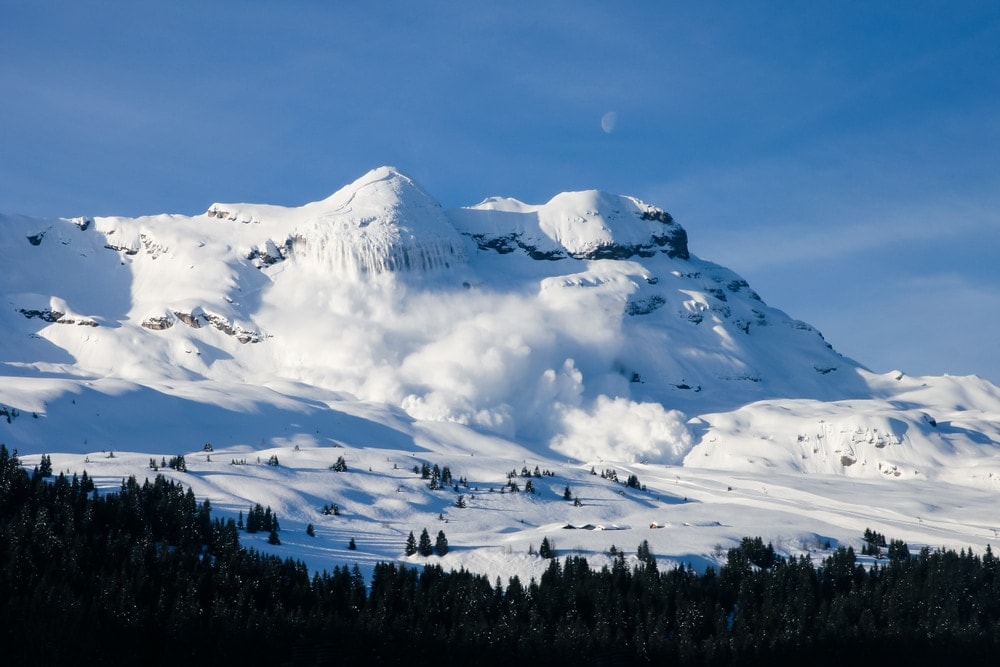
First up on our list is an avalanche, which is defined as any large mass of tumbling, sliding, or flowing snow. Avalanches can be thought of as a type of landslide, particularly since they can also include boulders and other debris. However, avalanches primarily consist of snow, and they have different innate characteristics from other types of landslides.
Since avalanches require snow in order to occur, they are really only a threat to locations that receive a decent amount of snowfall each year.
Places like the Rocky Mountains in North America, the Alps in Europe, and the Himalaya in south-central Asia, are all prime locations for avalanches. Nevertheless, anywhere where there is snow and at least a modest slope is at risk for an avalanche.
People who recreate in snowy, mountainous terrain are most at risk of injury or death from avalanches, but communities in alpine environments also face very real threats from these disasters. Burial under snow is generally the primary hazard of an avalanche as large slabs of snow can take out lodges or even entire towns.
Avalanche forecasting and mitigation is, in itself, an interdisciplinary field. Anyone going backcountry skiing or winter camping should check local avalanche forecasts before heading outside. Taking an avalanche safety and rescue course is also highly recommended for all winter sports enthusiasts.
2. Blizzards
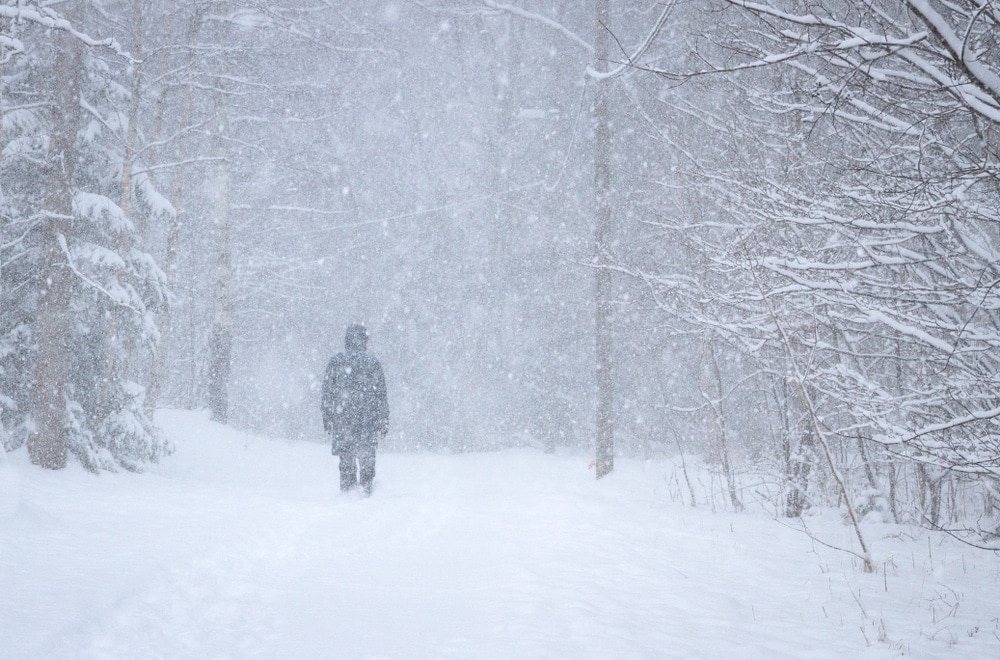
Another winter-related hazard, blizzards are defined by the US-based National Weather Service as storms that last more than three hours and that feature:
- Winds greater than 35 mph (15.7 m/s)
- Visibility of less than 0.25 miles (400 m)
- Large amounts of snowfall or blowing snow
As you can probably imagine, blizzards are only really a threat in locations that have cold enough temperatures to experience large amounts of snowfall. Technically speaking, snow doesn't need to be falling for a storm to be considered a blizzard, but there needs to be enough snow on the ground to blow around and reduce visibility for an event to be truly blizzard-like.
Blizzards that are associated with major storm systems are fairly easy to predict by experienced forecasters, particularly if they are associated with an incoming low pressure system. However, in more remote locations, accurate forecasts can be hard to come by, putting people at risk.
In the mountains, blizzards can pose a hazard for hikers, especially if they lead to white-out conditions that can make navigation next to impossible. Blizzards are also a hazard for drivers as they can also lead to slick roads and near-zero visibility.
We should also mention that blowing snow associated with blizzards can also increase avalanche risk in the days following the storm. So, eveclon when the sun finally pops out through the clouds after a major blizzard, you should be wary of an increased avalanche risk in mountainous locales.
3. Cold Waves

A technical term for a period of very cold weather, a cold wave is a type of natural disaster where the temperature drops rapidly over the course of 24 hours. While cold weather in itself isn't necessarily enough to cause a natural disaster, a rapid dropping of the temperature could lead to widespread problems for communities in a region.
Interestingly, there isn't a precise temperature threshold that a weather event has to reach in order to qualify as a cold wave. Rather, cold waves are classified by how fast the temperature falls. Since what's considered to be "cold" varies widely from region to region, local weather services will use local climate norms to determine if a weather event is actually a cold wave.
There are many reasons why a cold wave might occur. One of the most common causes of a cold wave is the arrival of a very strong high pressure system from the polar regions. Alternatively, movement in the jet streams can also drive very cold weather southward in just a matter of hours.
The primary danger of a cold wave is, indeed, the cold weather itself. This can lead to a higher risk of hypothermia and other cold-related injuries. Additionally, cold weather can cause ice and frost to build up quickly, damaging infrastructure.
Cold waves are also particularly dangerous for aircraft and other machinery. Extreme cold can drain vehicle batteries or cause diesel to gel. So, caution is needed whenever extreme cold is in the forecast.
4. Droughts
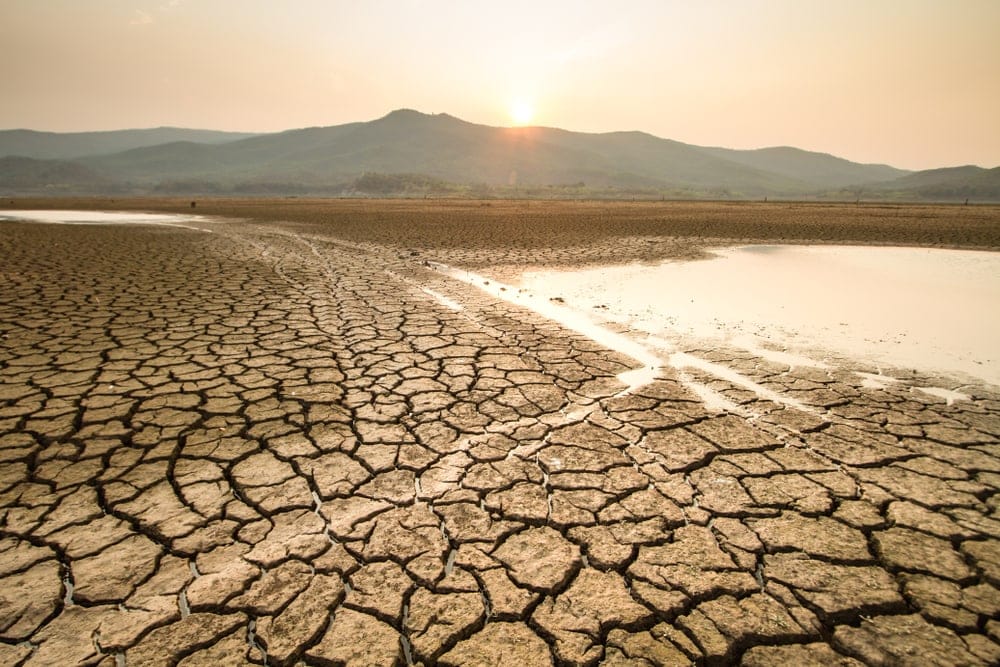
As with cold waves, droughts are somewhat difficult to define because they are subjective by nature. A drought is technically defined as an extended period of time where drier-than-normal conditions lead to a lack of water or other water-related issues.
However, "drier-than-normal" is a highly subjective phrase and what might classify as dry in one area might be very wet in another. What's more, a single location, such as the monsoon-affected parts of southeastern Asia, might seem plentiful rainfall during one half of the year and minimal types of precipitation during the other months.
As a result, defining when a drought begins and ends isn't always easy. Most of the time, climate scientists will identify a drought based on changes in rainfall patterns or on low water levels in local lakes and reservoirs.
But droughts can last anywhere from a few weeks to multiple years or even decades. In fact, as of 2021, there is an ongoing drought in Ethiopia that started around 2015.
While it's unclear how long the ground will last, humanitarian organizations already predict that tens of millions of people in the region will face food insecurity as a result. So, while droughts can be difficult to predict and identify, their human impacts are very real.
5. Earthquakes
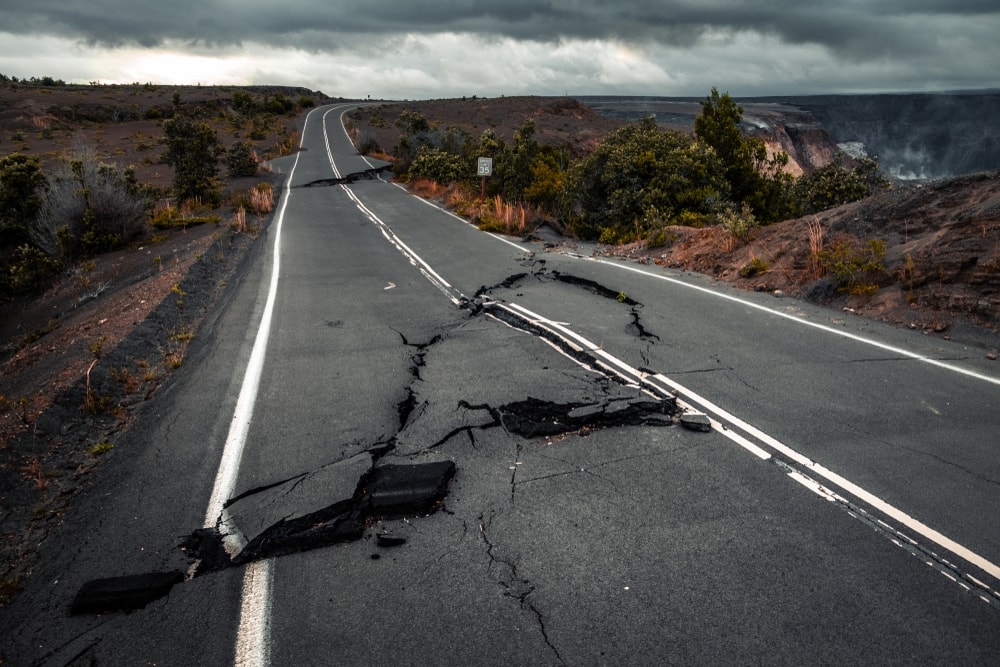
One of the most unpredictable natural disasters, earthquakes occur whenever there's a sudden and violent slippage of the Earth's tectonic plates.
To understand how Earthquakes work, however, we first need to recognize that the Earth's surface is not one continuous layer. Rather, the Earth's crust consists of many plates that slip, slide, collide, and move past each other on a regular basis.
When these plates suddenly slip past each other, that movement can lead to very real shaking on the Earth's surface. While small earthquakes happen dozens, if not hundreds of times a day, without issue, major earthquakes can cause catastrophic damage and loss of life.
Perhaps the most famous of the recent earthquakes were those in Nepal in 2015 and in Haiti in 2010, both of which destroyed countless homes and took thousands of lives.
Some earthquakes can also cause secondary, and sometimes even more catastrophic, natural disasters. In particular, earthquakes can also cause tsunamis, such as the Tōhoku earthquake and tsunami that took place in Japan in 2011, which triggered tsunami waves that were likely about 130 feet (40 meters) high.
6. Floods
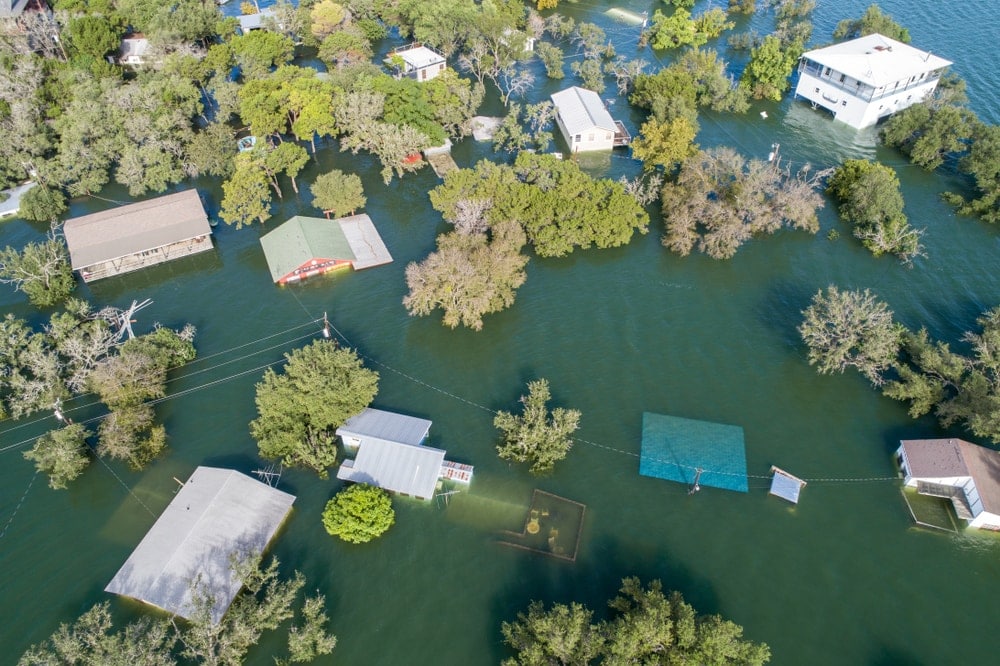
Floods are any instances where water temporarily overflows onto land that is usually dry. This might seem like a very vague definition and, well, that's because it is!
As with many types of natural disasters, what constitutes a flood in one place might not actually be a flood in another. That being said, many of us could identify a flood fairly easily in a photograph, particularly if we see large amounts of water in streets or other urbanized areas.
There are many reasons why floods might form, though heavy rainfall is usually a culprit. In other instances, like we'll see later in this article when we talk about hurricanes, something called storm surge could also lead to flooding.
What's important to keep in mind about floods, however, is that they are often much more dangerous than they might seem. Even a relatively small flood with about 6 inches (15 cm) of water depth could knock you off your feet and lead to injury.
The general rule with floods is that you should never try to travel through a flooded area, regardless of how minor the situation might appear. Trying to walk, drive, or swim through a flood is almost always a bad idea as rapidly changing currents can drag you into a dangerous situation.
7. Flash Floods

In a weather forecasting context, flash floods are defined as any type of flooding that begins within 6 hours of a period of heavy rain or other water-related cause.
Like regular floods, flash floods are normally associated with major storms. Indeed, hurricanes and other meteorological events can cause rapid flooding of an area in a short period of time.
However, the particularly dangerous thing about flash floods is that they can happen in places where it actually hasn't rained. For example, many places in the desert southwest of the United States—particularly narrow canyons—can experience rapid surges of water and dangerous flooding when bluebird skies are overhead.
This type of flash flooding is normally associated with a thunderstorm upstream, but it may also be caused by a dam break or malfunction. Since there are few (if any) visual clues about these oncoming floods before they happen, they can be especially dangerous for hikers and canyoneers.
8. Hailstorms
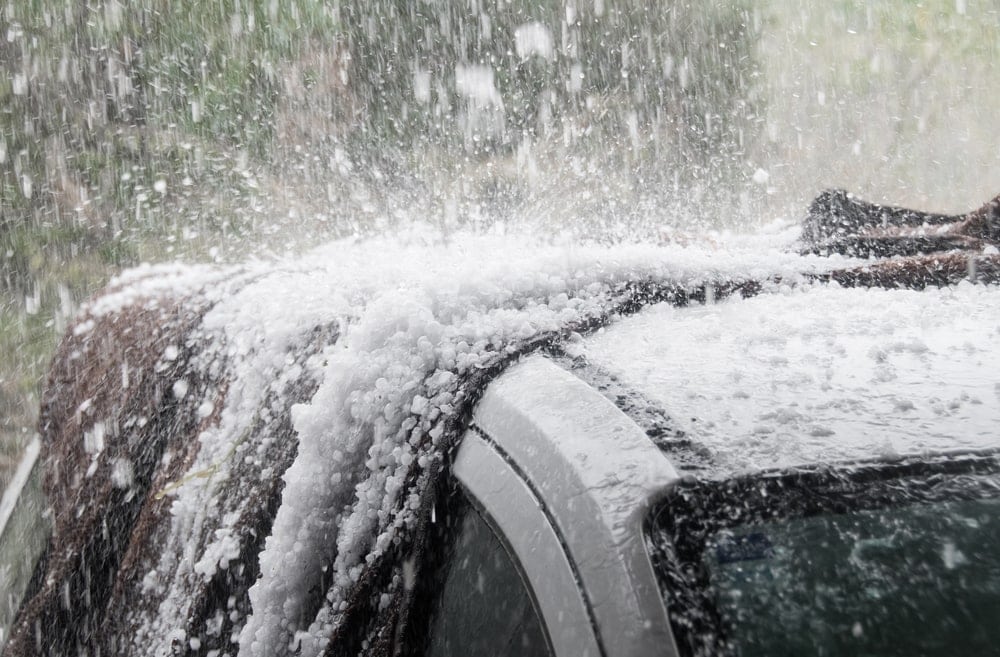
Despite their name, many meteorologists wouldn't necessarily classify hailstorms as their own distinct type of storm. Rather hail storms, or "significant hail events," usually occur alongside major thunderstorms.
In some thunderstorms, particularly supercells, very strong updrafts (upward flows of air) can lead to the formation of hail. How hail forms can be a bit confusing, so if you're interested in how it all works, check out this video from the folks at The Weather Channel:
https://youtu.be/6M-ycZLSF1w
Regardless of how hail forms, however, the reality is that hail can be particularly dangerous for humans and it can lead to widespread damage. Although most hailstones are somewhat small, large hailstones can injure unsuspecting passers-by on the ground.
What's more, the Insurance Information Institute estimates that hail causes hundreds of millions of dollars worth of damage each year in the United States alone. In fact, one report even estimates that hail damage in 2019 alone led to more than $13 billion in damages. Who knew?
9. Heat Waves
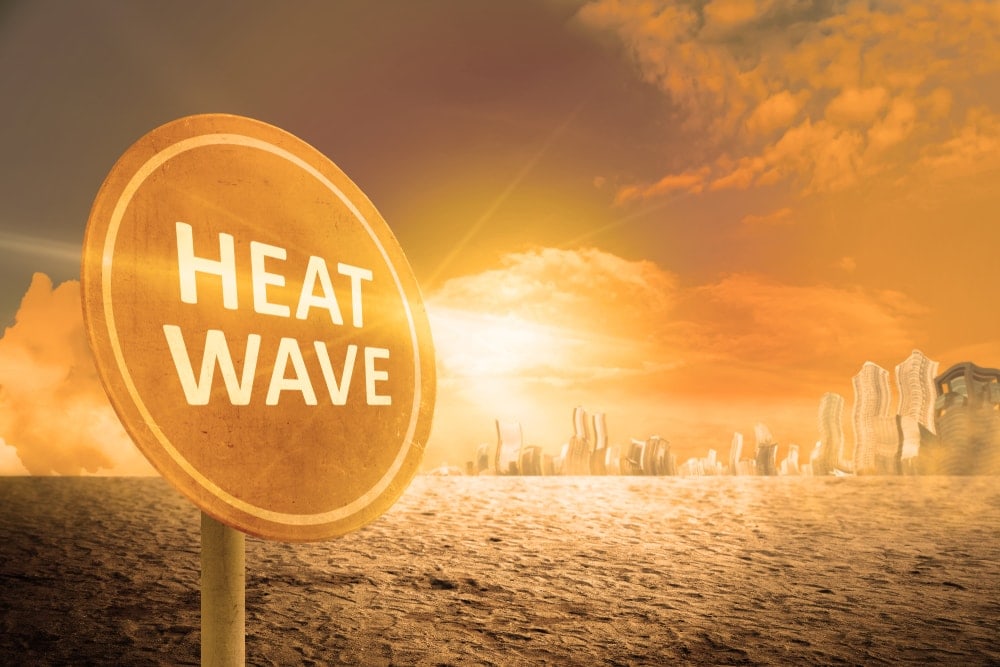
Effectively the opposite of a cold wave, a heat wave is a prolonged period of exceptionally high temperatures.
As with cold waves, there is no technical definition for what constitutes a heat wave as normal temperatures vary from location to location. But, any period of two or more days where the temperature is higher than the historical average for an area is a heat wave.
For example, multiple days of 100ºF (38ºC) temperature in Montreal, Canada during the summer would likely be considered a heat wave. But, those same temperatures in the scorching hot Lut Desert of Iran would be positively balmy.
In general, the danger of a heat wave is the risk of severe dehydration that can lead to a life-threatening condition known as heat stroke. Younger people, older people, and people who are immunocompromised tend to be the most vulnerable during heat waves, but severe heat-related illnesses can affect us all.
If a heat wave is in the forecast, staying cool and hydrated is of the utmost importance. This means drinking lots of water, seeking out air conditioning, and avoiding strenuous exercise whenever possible to limit the chances of developing heat stroke or any other similar condition.
10. Ice Storms

A particularly dangerous type of winter storm, ice storms occur whenever there are substantial collections of freezing rain. The US-based National Weather Service generally classifies ice storms as any weather event that leads to the accumulation of 0.25 inches (6.4 mm) or more of ice on surfaces like trees, roads, and buildings, but ice accumulation totals are usually higher.
That being said, most ice storms are not particularly violent, like what you'd find in a major thunderstorm.
Rather, ice storms happen when there's a thin layer of warm air located a few hundred feet above the ground during a snowstorm. As the snow falls from the sky, it hits this layer of warm air and melts, but then refreezes when it enters the layer of colder air right along the surface of the Earth, leading to the formation of freezing rain.
As you can imagine, having ice covering surfaces, such as roads, isn't exactly safe. Therefore, ice storms are particularly well known for causing traffic accidents, particularly in urban areas. The weight of the ice on trees and telephone poles can also cause major power outages and other similar damage, which only makes matters worse during a period of cold weather.
So, if an ice storm is in the forecast, do what you can to stay inside as much as possible. If you're out camping, you'll want to be careful of falling trees, but the real danger of these storms is on the road. Avoid driving whenever you can, and have emergency supplies on hand if the power goes out during a storm.
11. Impact Event
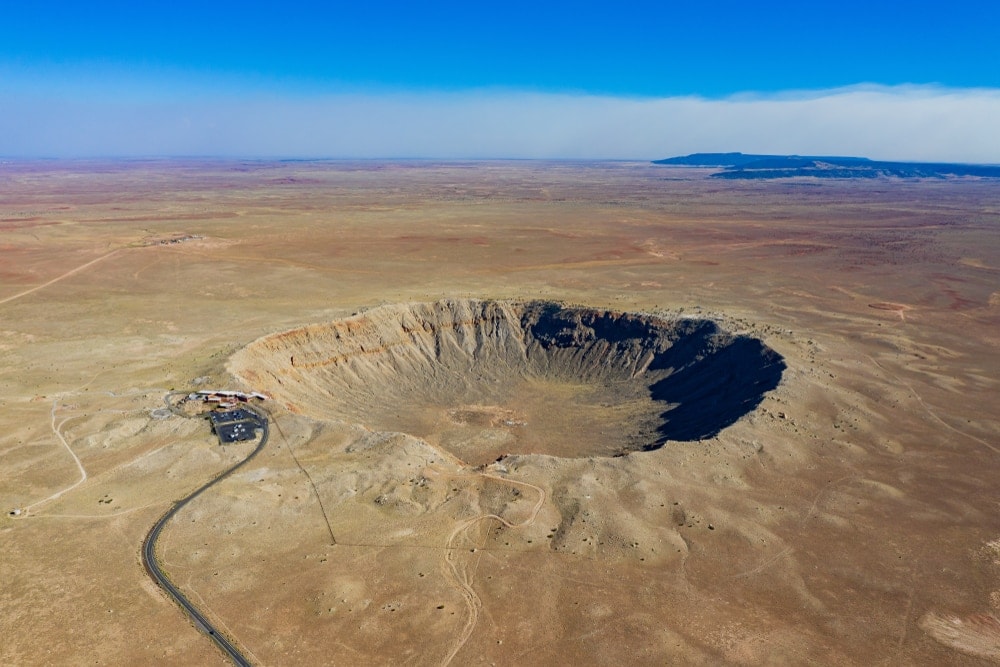
One of the few natural disasters on our list that's caused by objects that don't come from our planet Earth, impact events, or "asteroid impacts," are collisions between astronomical objects. For our purposes here, however, the type of impact event that we're concerned with is between a meteor and Earth.
Thankfully, impact events don't happen that often on Earth. This is good news for us humans (and all of the other animals on our planet) because meteor impacts can cause massive damage.
The most recent major meteor event was that of the Chelyabinsk meteor in 2013. The Chelyabinsk meteor entered the Earth's atmosphere over Chelyabinsk Oblast in Russia and exploded about 14 miles (23 km) above the ground.
While the impact of the meteor itself wasn't actually the problem in this situation—it was the explosion itself—the blast from the meteor did destroy several buildings and lead more than 1,500 people to seek medical attention for their injuries.
However, an earlier impact event called the Tunguska event, which took place in 1908, did cause a major impact. This meteor arrived in what is now Krasnoyarsk Krai, Russia, and it flattened an estimated 80 million trees.
Although impact events aren't that common, the fear is that they can cause massive amounts of damage, injury, and death. Indeed, the thought of a massive rock hurtling toward the surface of the Earth isn't exactly a pleasant one. The good news is that many space organizations, like NASA, are developing technology to alert us if a meteor is on its way.
12. Landslides
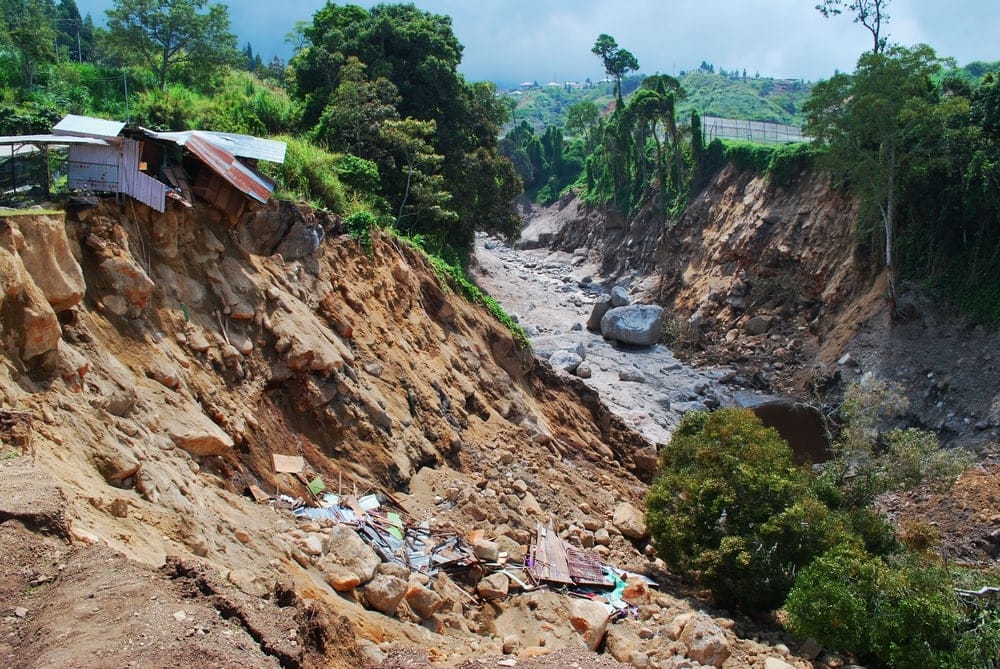
The USGS defines a landslide as any large-scale movement of a mass of debris or rock down a slope. We would consider landslides to be a form of something called "mass wasting," which is effectively the sliding of soil or rock as a result of gravity.
Landslides are unfortunately quite frequent in certain parts of the world and, depending on their size, they have the ability to wreak massive amounts of destruction.
For example, the largest known recorded landslide in US history was the one caused by the eruption of Mount St. Helens in 1980. This landslide is estimated to have moved about 70–150 miles per hour (112–240 km/h) downslope, bringing with it more than 0.67 cubic miles (2.8 cubic kilometers) of debris.
Landslides can be caused by a wide range of events, including volcanic eruptions, earthquakes, and heavy rains. Scientists can sometimes predict landslide-prone slopes, but forecasting the exact time of a landslide isn't always easy due to the many factors involved in landslide formation.
13. Limnic Eruptions
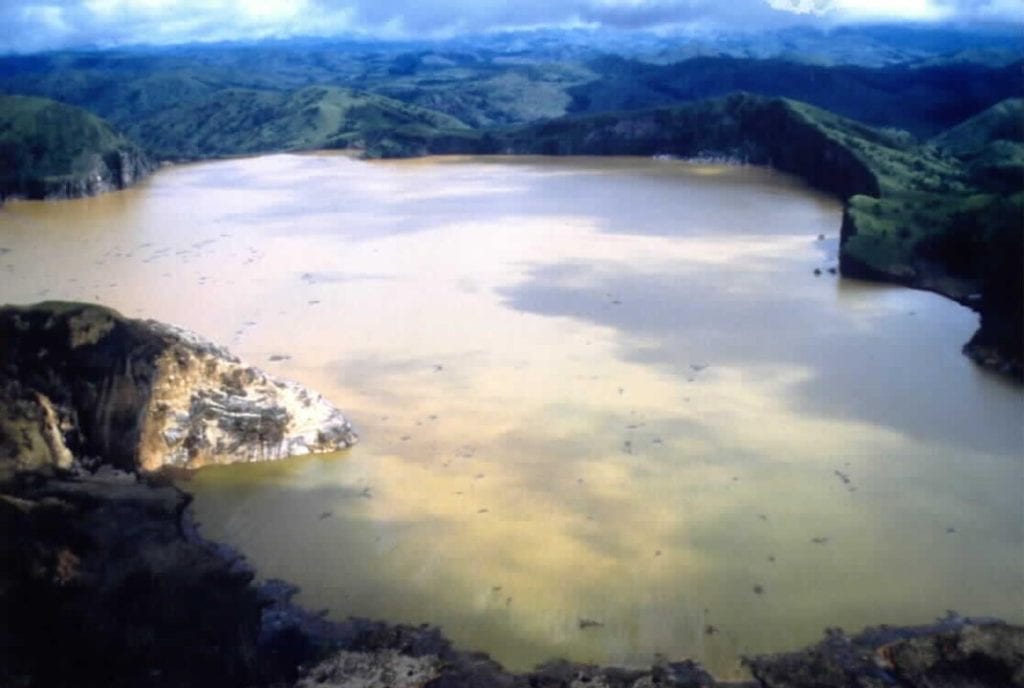
Limnic eruptions, or "exploding lakes," are a very rare type of natural disaster where carbon dioxide very suddenly and violently erupts from the bottom of a freshwater lake.
If that sounds terrifying, well, it's because it is: Limnic eruptions, while rare, have caused major destruction around two lakes—Lake Nyos and Lake Monoun—in west-central Africa, leading to the deaths of thousands of people and animals.
Basically what happens is that these two lakes, due to the geology of the bedrock around them, have dissolved a whole lot of carbon dioxide. This carbon dioxide gets highly pressurized at the bottom of these deep lakes as more carbon dioxide is dissolved into the water.
In normal situations, these lakes will simply keep absorbing carbon dioxide until they reach their saturation point. But, if something major happens in the nearby landscape, such as a landslide, this can cause the release of all that pressure in the lake, leading to—BOOM! A literal explosion.
Okay, this eruption isn't as catastrophic as you might think, but that's because it all happens within the air. What happens is that carbon dioxide emitted from the lake in one big poof ends up immediately displacing all the oxygen surrounding the lake because carbon dioxide is heavier than oxygen.
This leads to asphyxiation for all the humans and other animals in the immediate vicinity of the lake. Oh, and the eruption of Lake Nyos in 1986 also created a tsunami wave about 60 feet (20 m) height (as if we really needed another natural disaster on top of an exploding lake).
So, what are we humans to do about this erupting lake issue? Well, scientists inserted a massive pipe under Lake Nyos after its last eruption in 1986. The hope is that this will prevent another eruption in the future, but only time will tell.
14. Mudslides
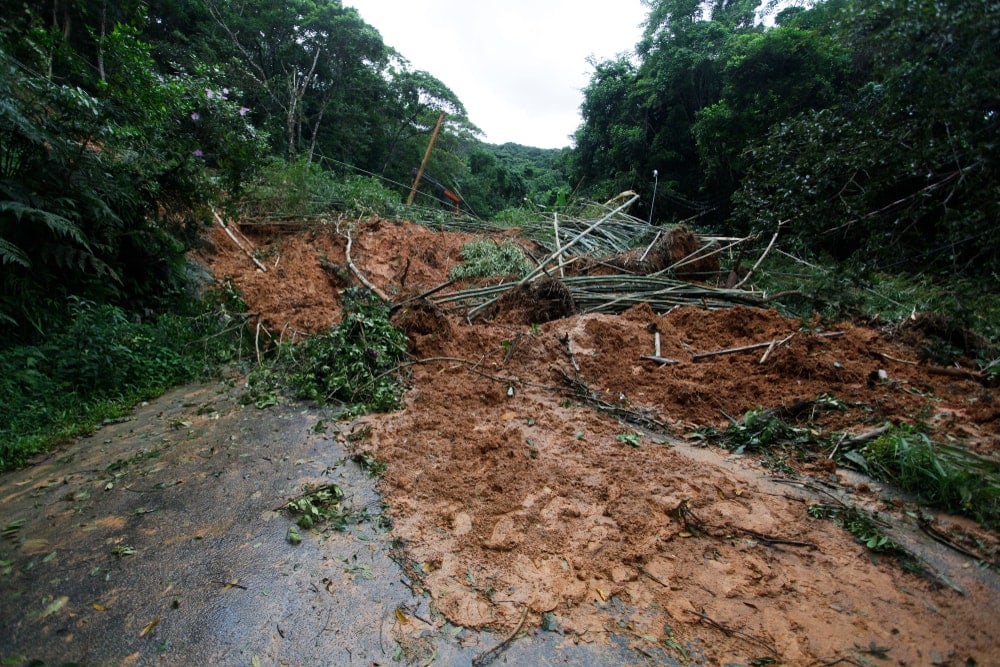
Mudslides are technically a type of landslide that includes mostly mud and other similar fast-moving debris.
Like other types of landslides, mudslides have a whole host of different causes, including heavy rain and earthquakes. But, slopes where we humans have removed vegetation for agriculture or other development are particularly prone to mudslides due to the lack of structure within the soil column.
The worst mudslide in the US in recent memory was that of the 2014 Oso mudslide, which took place outside the town of Oso in Washington state.
In the region around Oso, which was located along the North Fork of the Stillaguamish River, there were dozens of days preceding the incident that saw periods of heavy rain. There is still some controversy over what particularly caused the mudslide, but the extent of the disaster is clear: 43 people lost their lives and nearly 50 buildings were destroyed in the process.
Again, like landslides, scientists can't always predict when mudslides will occur. But, they are developing new techniques so they can provide more accurate mudslide predictions in slide-prone areas.
15. Pea Soup Fog
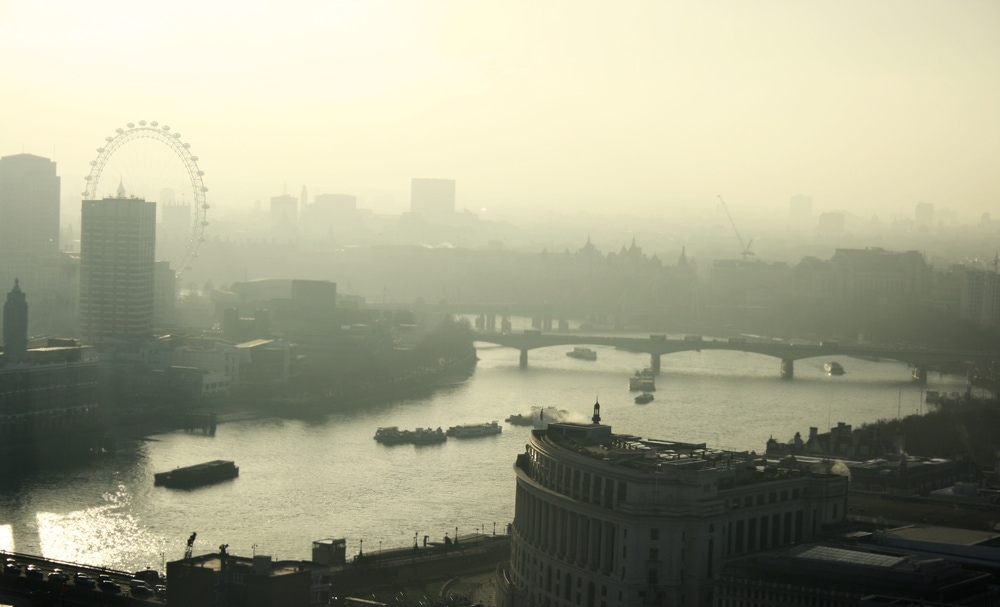
Pea soup fog is essentially a popular term for yellowish-black smog that sets in over major urban areas. It's basically a poisonous mix of fog, soot particulates, and sulfur dioxide that can settle down over a given area for hours, days, or even weeks at a time.
Now, we know what you're thinking: Smog is human-caused! How can it be a natural disaster?
Well, while the soot and other particulates within the smog are, indeed, human-caused, the long-lasting fog itself is definitely a meteorological phenomenon.
Arguably the most famous instance of pea soup fog was that of the Great Smog of London in 1952, which is estimated to have killed anywhere from 4,000 to 12,000 people (government estimates at the time are believed to have been widely inaccurate).
The fog itself was caused by a large anticyclone that settled down over London and caused a widespread temperature inversion. This inversion trapped cold air under a layer of warmer air, preventing it from mixing with other parts of the air column.
On its own, this temperature inversion isn't exactly bad—many cities around the world, including Denver, are famous for their frequent temperature inversions. But the inversion was mixed with soot and sulfur dioxide that resulted from the burning of coal for household warmth during the mid-century.
The banning of coal fires in most major cities, as well as advancements in technology, have minimized the risk of pea soup fog around the world. But, places with lots of air pollution and frequent temperature inversions are still at risk for this type of natural disaster.
16. Sinkholes
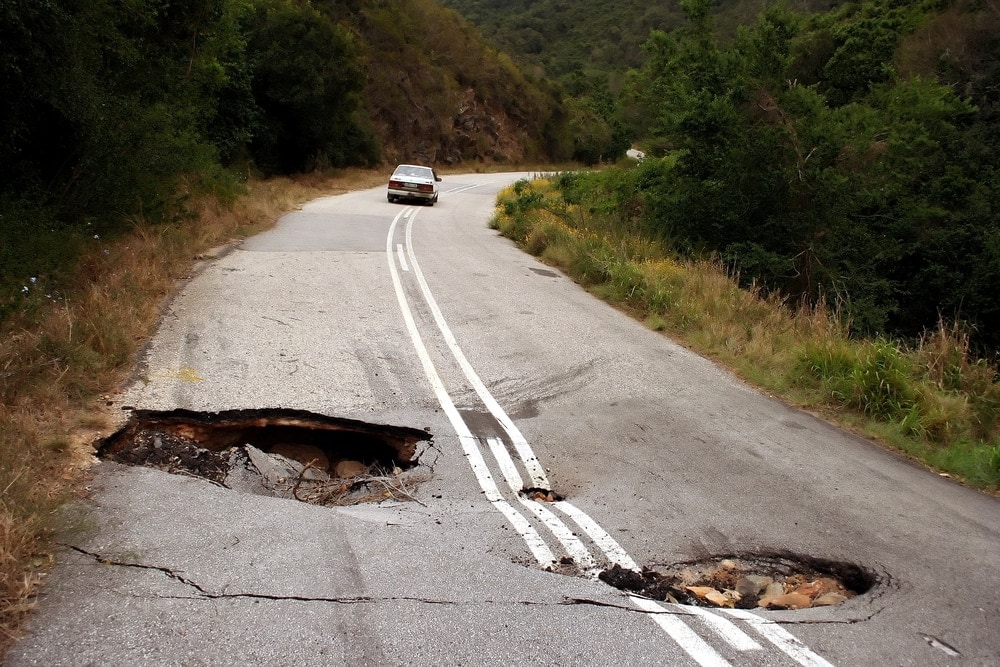
For many of us, the thought of the ground collapsing below our feet is the stuff of nightmares. But for people in some parts of the wodue to heavy rain fallsrld, sinkholes are a very real threat on a day-to-day basis.
Sinkholes are defined as any hole that forms below the land surface without an external draining. They can vary quite a bit in size, from just a few feet wide to more than 100 feet (60 m) in diameter.
Usually what happens is that the bedrock in an area is made of some sort of soluble material, like limestone, salt beds, or carbonate rock.
As groundwater seeps through the bedrock, it slowly dissolves the rock, causing a hole to form underground. When enough pressure is applied over the growing hole, the ground will collapse, leaving behind a massive sinkhole in its wake.
Since sinkhole formation depends a lot on the underlying bedrock of an area, there are certain regions that are more prone to them than others. In particular, the state of Florida is known for its sinkholes. But, unfortunately, there's not really a great way to predict them using current technology.
17. Solar Flares
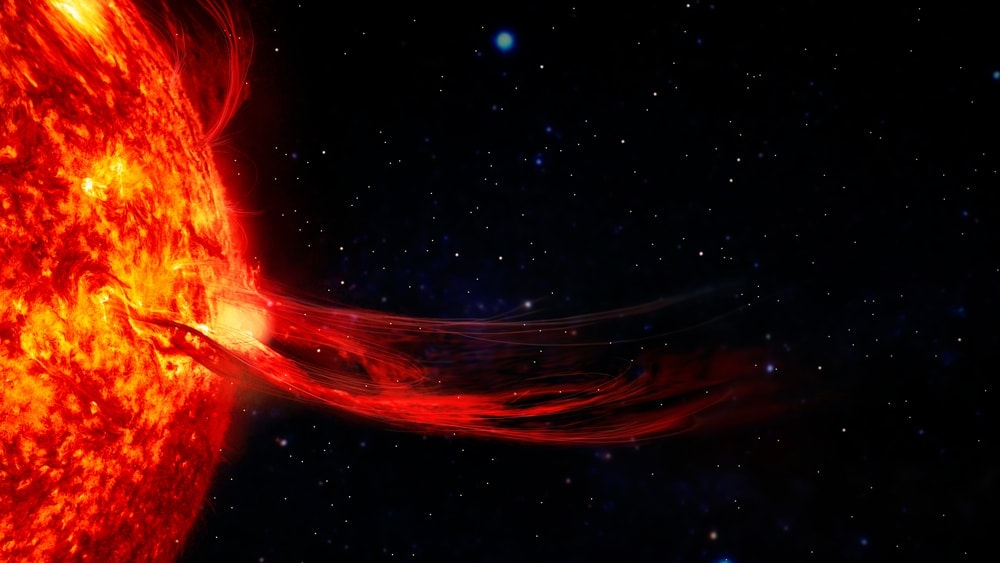
Okay, okay, we know: Solar flares don't exactly happen on Earth, but we promise that they do have real-life impacts on our lovely planet.
A solar flare is effectively a major explosion that happens on the surface of the sun. While our sun might be very far away, these solar flares can cause massive disruptions to our planet's magnetic field.
In particular, solar flares and their associated geomagnetic storms can cause issues with electrical power outages and communications satellites due to the energy that they emit. These flares can also affect radio communications on Earth, which is pretty wild to think about.
One of the best-known instances of a solar flare affecting us humans was the geomagnetic storm that caused a power blackout in parts of Canada in 1989. The storm destroyed power transmission to more than 6 million Canadians around Quebec and even affected power transformers as far away as the US state of New Jersey.
Although technology has come a long way since the 1989 geomagnetic storm, we are still at risk of power and communications issues as a result of solar flares. This issue has long been a point of concern for space agencies around the world, but more research is needed to find a reliable solution during these natural disasters.
18. Subsidence
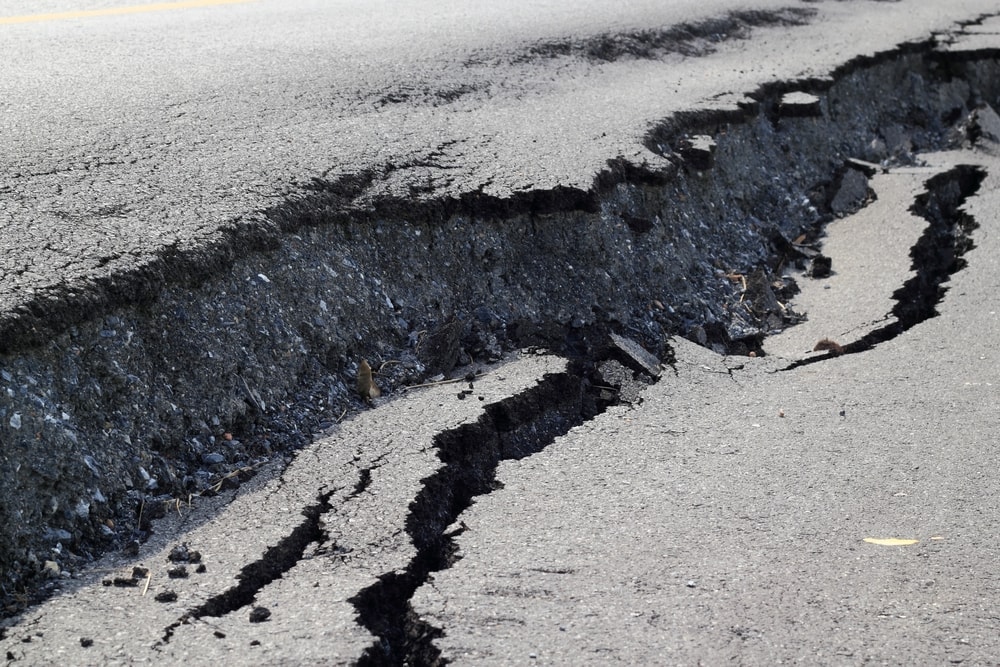
Subsidence is a type of natural disaster that's quite similar to sinkholes but with a bit of a twist. Unlike sinkholes, which form as groundwater dissolves the bedrock, subsidence happens when large amounts of groundwater are depleted from the bedrock.
This sort of water loss is common in areas that use large amounts of water for irrigation, such as in the US state of California. Over time, this water loss causes the ground to literally fall on itself, lowering its elevation over time.
Oftentimes, land subsidence affects such a large area that you might not even know that it's happening. But, it can cause major problems in urban areas, such as in Mexico City, where land subsidence led to the unlevel sinking of the old Basilica of Our Lady of Guadalupe—a cultural landmark.
In these situations, engineers can sometimes construct a secondary foundation under the at-risk building to protect it slightly from further subsidence, but we don't currently have a great solution for this issue.
19. Thunderstorms

Thunderstorms are often grouped together with natural disasters, but, interestingly enough, they aren't really a disaster in their own right.
From a meteorologist's perspective, a thunderstorm is a type of storm that results from deep, moist convection in the troposphere. These storms are labeled as thunderstorms when they produce lightning, which then produces thunder.
Despite this, thunderstorms aren't a major threat in their own right, unless they also bring other aspects of severe weather, like damaging straight-line winds, flash flooding, hail, lightning, and tornadoes.
So, many of the natural disasters on our list actually come from thunderstorms. This means that a thunderstorm on the horizon could bring with it a whole host of issues. As a result, it's important to pay attention to severe weather warnings before going to any outdoor activities such as camping, particularly in thunderstorm-prone areas, like Florida and the Great Plains of the US and Canada.
20. Tornadoes
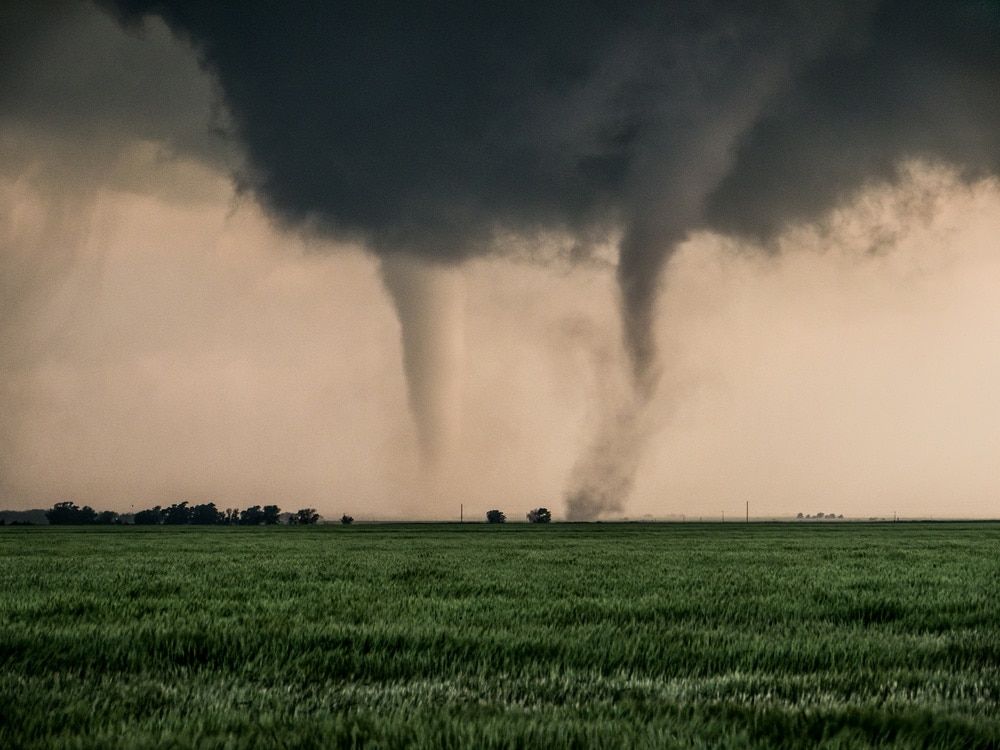
Depending on where in the world you live, tornadoes might be a fact of everyday life. But, regardless of how often you might see or hear about them, tornadoes are most definitely a type of natural disaster.
A tornado can be defined as a violently rotating column of air. They extend from the base of a type of cloud known as a cumulonimbus and they can cause exceptionally fast wind speeds of hundreds of miles an hour.
That being said, while tornadoes are somewhat common in certain parts of the world ("Tornado Alley" in the US being one of them), meteorologists aren't entirely sure what causes them. Predicting tornadoes is also a challenge, so it's best to head any tornado "watches" or "warnings" you may hear in your area.
If you do get caught outside during a tornado watch or warning, immediately take shelter. A dedicated storm shelter underground is ideal, but any interior room with no windows on the lowest floor of the building is better than nothing. Then, get under a sturdy piece of furniture and protect your head and neck until the tornado warning ends.
21. Tsunamis
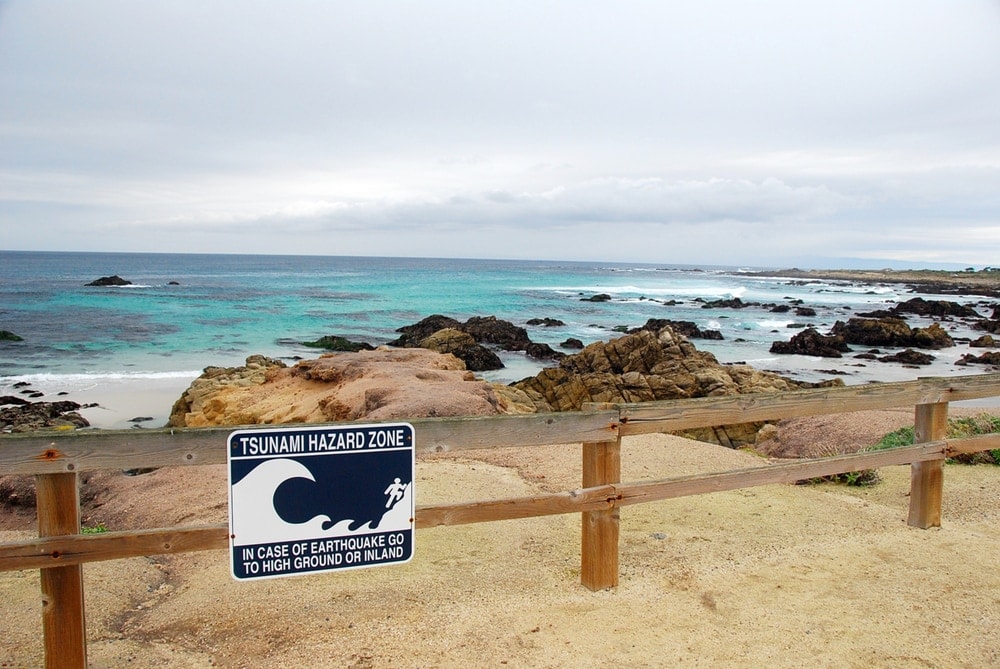
Long a part of the human imagination, tsunamis are massive waves that are caused by geologic activity. These waves are usually instigated by earthquakes or undersea volcanic eruptions, both of which can cause the propagation of seismic waves through the ocean.
However, contrary to popular belief, tsunamis don't look like huge ocean waves. Rather, they look a lot like a large wall of water heading toward the shoreline like a rapidly rising tide.
Tsunamis are a threat whenever there's some sort of geologic disturbance to the seafloor. But, the biggest ones are associated with volcanic eruptions or major earthquakes, like that of the 2004 Indian Ocean Earthquake and Tsunami.
The earthquake that triggered the tsunami was measured as a magnitude 9.1, and it struck in the middle of the Indian Ocean. This caused the formation of a devastating tsunami about 30 minutes later in places like Sri Lanka and Sumatra. More than 200,000 people died during the tsunami in 14 countries, making it one of the worst disasters on record.
Many tsunami-prone places have early warning detection systems and sirens in place to alert people to the possibility of danger. If you hear a siren or receive a warning about a tsunami, immediately stop what you are doing and seek out higher ground until the threat passes, and encourage others around you to do the same.
22. Tropical cyclone

Hurricanes, typhoons, cyclones, whatever you call them, they all mean the same thing: a tropical cyclone.
A tropical cyclone is defined as a rapidly rotating storm that forms over tropical areas where there is plenty of warm water and moist air. These storms develop into massive low pressure systems that can bring fierce winds, heavy rains, and spectacular storm surge to coastal and inland areas.
Places like the eastern US, the Caribbean, and Oceania are most prone to tropical cyclones that make landfall after traveling large distances over the ocean and building up energy along the way.
These storms are called hurricanes in the Atlantic Ocean when they reach wind speeds of at least 74 mph (119 km/h). Meanwhile, they are normally called typhoons in the Pacific Ocean.
As we've mentioned, tropical storms can bring high winds, heavy rainfall, and storm surge. They often bring down power grids and cause widespread flooding, which can be disastrous in low-lying coastal regions.
Unfortunately, there is evidence that hurricanes are becoming more frequent and more severe with the changing climate. Although more research is needed to understand what precisely the changes will be, each successive hurricane season seems to bring new hazards and new record-breaking storms that pose a continuing threat to coastal communities.
23. Volcanic Eruptions

Volcanoes are openings along the crust of the Earth where lava, gases, and ash can escape. When these materials escape from the opening on the planet's surface, we call this a volcanic eruption.
In popular culture, we think of volcanic eruptions as catastrophic events with shooting lava, rocks, and other debris. This actually isn't too far from the truth for some volcanoes, but many volcanoes just aren't as violent.
Indeed, some eruptions are decidedly not violent and they simply have a steady stream of lava flowing from their slopes. But, others like the Mount St. Helens eruption in 1980, can be disastrous. Meanwhile, others still can disrupt global air traffic due to particulates in the atmosphere, like the Eyjafjallajökull volcano eruption in 2010 in Iceland.
Researchers have become better at predicting eruptions; however, this is not an exact science. They will often know that a volcano is at threat of an eruption, but predicting the exact time of a volcanic event is still beyond our current capabilities.
24. Wildfires
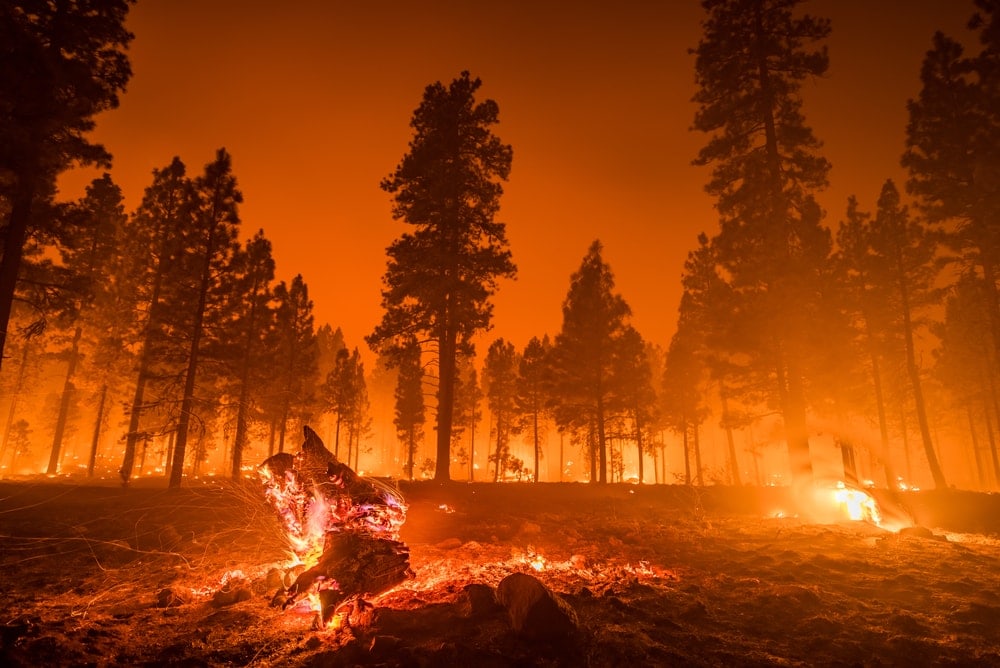
Wildfires, which are unplanned and uncontrolled fires that burn in forests, bushlands, prairies, or grasslands, are an increasingly common threat in our lives.
In very dry parts of the world, like Australia and California, wildfires happen naturally as part of standard ecological processes. In fact, many plant species actually rely on fires to reproduce, such as the lodgepole pine and the eucalyptus, so the fires themselves can have some positive ecological consequences.
However, in areas with large human populations, wildfires can be devastating. These fires can move incredibly fast and burn large swaths of land in a matter of days. The fires pose a direct risk to human life and property, so many governments have systems in place to stop wildfires.
But, wildfires can be both natural and human-caused. Lightning strikes are one of the most common natural causes of wildfires while uncontrolled campfires, downed power lines, and arson are often the impetus behind human-caused wildfires.
Regardless of their cause, though, wildfires can be dangerous. So, know local fire regulations whenever you camp and be sure to check the current fire risk before heading out the door during prime wildfire season in your location.
- You may also like: 24 Common and Extraordinary Cloud Types with Images, Surprising Facts, Infographic and Formations
Interesting Facts About Natural Disasters
Now that you know quite a bit about the 24 types of natural disasters, let's talk a bit about some interesting natural disaster-related fun facts. So, here are some interesting facts that you ought to know to help you prepare for any eventuality:
According to the University of Colorado, some 80% of natural hazards are weather-related, including avalanches, wildfires, and hurricanes. The rest are geophysical hazards, such as tsunamis and earthquakes.
2|Natural Disasters Can Cost Billions Of Dollars
It's hard to compare the cost of natural disasters due to regional discrepancies in the cost of living. But, in the US, the costliest disaster on record (so far) was that of Hurricane Katrina in 2005, which cost a whopping $170 billion in damages.
3|Meteorological Natural Disasters Are Becoming More Common
Due to the effects of climate change, many meteorological natural disasters (e.g., wildfires and hurricanes) are becoming more common. For example, hurricane seasons are getting longer and more severe with each passing year as storms become stronger and more frequent.
Natural Disasters FAQs
Here are our answers to some of your most frequently asked questions about natural disasters:
How Can We Prevent Natural Disasters?
Unfortunately, there's usually no way to prevent natural disasters from occurring. However, we can be more prepared to handle natural disasters by creating infrastructure that makes our societies more resilient, like reinforced buildings that can handle major earthquakes.
On a personal level, though, you can prepare yourself by having emergency supplies on hand at all times. You should aim to have enough food, water, and other supplies to survive at least 3 days in your home during a natural disaster—just in case.
Who Handles Natural Disasters?
Most countries and municipalities have government organizations that help with damage control and humanitarian aid after a natural disaster. On an international level, organizations like the UN and other non-governmental organizations also offer assistance to regions after a catastrophic event, such as a tsunami.
Can Natural Disasters Be Man-Made?
Natural disasters can be man-made. The best example of this is a wildfire that's started by humans with uncontrolled campfires. Additionally, human actions can make natural disasters worse over time, such as with the increasing risk of major hurricanes as a result of climate change.
- You May Also Like: How Climate Change Affected Our Natural Landscape
Different Pictures of Natural Calamities
Source: https://outforia.com/types-of-natural-disasters/